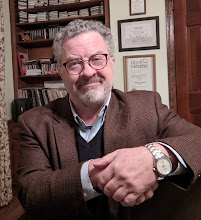We can find
dozens of articles from the Association of Fundraising Professionals and other credible
sources, but equally we can go with what we know instinctively.
Relationship
building is a lifecycle
·
Donor prospecting/cultivation – find them
·
Donor engagement – get them interested and on
board
·
Donor increase in giving – encourage greater
participation
·
Donor as advocate – when the donor becomes an
ambassador to peer exponential growth become possible.
·
Donor bequest – the commitment to a legacy gift
is the greatest testament of donor confidence.
First
rule: Don’t take an engagement ring on the first date. It is off putting. Relationships develop over time.
Second
rule: Relationships are two-fold – the relation between organizational rep
and donor and the relation between organization and donor. The organization
will outlast the rep (or it is a really shaky org) so make sure that the org
and donor have a real relationship.
Third
rule: Relationships are transactional. One way is not sustainable over time
– donors get bored, feel used, feel unloved, and move on unless they are
engaged.
Metric:
Stay in touch. The longer the interval in actual person-to-person communication
(newsletters don’t count), the colder the call when you make it. Calling for no
real reason often sparks suspicion and just feels awkward for all involved,
therefore use any logical reason to touch base (call, email, message) such as upcoming
talks or webinars, events such as 5k run
or wine pull (according to possible interests of the donor!), birthdays, and
art exhibits or sports team standings.
NOTA BENE:
Our wide range of donors have different preferences for communication – text,
FB Messenger, phone call, email, letter (not form).
Donors
are a moving target
·
Donors come and go – if they get bored with us
or more excited by another organization, they move on
·
Donors are multi-faceted – they likely support
more than one organization, not just ours AND there is likely a hierarchy in
the donors mind of which organization should receive the bigger check.
·
Donors have lives – Things happen – small
children in school evolving to empty nesters, career changes, household moves,
death of a spouse, divorces, etc – and
if we keep them through good times and bad, there may be ups and downs in
giving that may or may not reflect how much they like our org.
First
rule: Stay on top of the info - new addresses, new phone numbers, new emails,
new employers, new spouses, new last names – we have to watch for every clue
and update as best we can. Jot down the number on the caller ID , observe the
email address sending an RSVP.
Second
rule: Connect the dots – obits are
the best tool for confirming who is married to whom, parents’ names, children’s
names, and more. Glean information everywhere you can and stow it in RE.
Third
rule: Track as best you can the community involvement of donors – other
orgs they support, their memberships, their passions and interest…these latter
make for good talking points.
Metric:
Continually update records. Time spent on updating information is well spent.
Know the
product
·
Donors have heard our standard speech – ever go
to a comedy club for the second set by the same comedian? Or a concert tour
where the band does some “spontaneous” banter by rote in the next city?
·
Donors want to know what is new now – fair
question, don’t we all?
·
Donors want to know --- lots of things
First
rule: Keep up as best you can with
changes within your own organization– be they virus related or not – because
someone may ask you and it would be nice to have an answer ready.
Second
rule: Find ways to engage your co-workers in departments/areas where
programmatic work is taking place, i.e. the trenches floor. It’s an eye opener.
You’ll learn much more than the talking points in your brochures.
Third
rule: Give tours of programmatic areas (in non pandemic times) and GO ON
tours with co-workers who may have different perspectives and talking points.
Be a secret shopper with a notepad. You would learn something new, but it is
also about watching the donor’s interest peak or wane, listening to what they
ask.
Fourth rule:
Share what you learn with your co-workers in development.
Metric:
Learn more about your organization at every opportunity and build relationships
within the organization as well as outside the organization.
